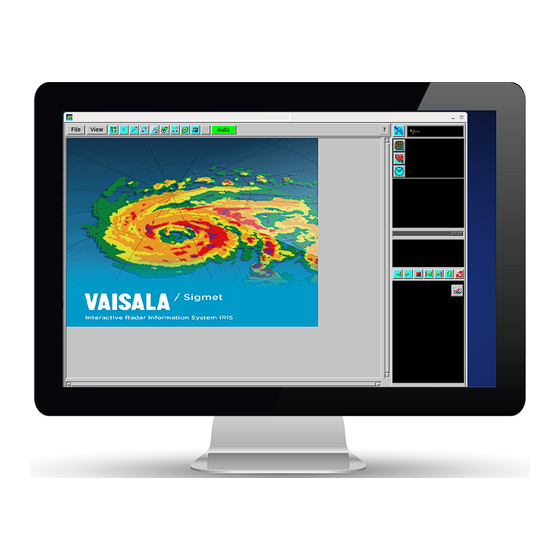
User Manuals: Vaisala IRIS Weather Radar Software
Manuals and User Guides for Vaisala IRIS Weather Radar Software. We have 1 Vaisala IRIS Weather Radar Software manual available for free PDF download: User Manual
Vaisala IRIS User Manual (394 pages)
Table of Contents
-
CATCH Algorithm127
-
Displaying CATCH128
-
COMP: Composite130
-
Configuring COMP134
-
WARN Algorithm138
-
COMP Scheduling139
-
Displaying GAGE168
-
SHEAR Algorithm181
-
SWS Raw Report200
-
Color Scale Tool212
-
Highlight Tool215
-
Animation Tool224
-
Slide Show Tool229
-
Cursor Tool231
-
Forecast Tool243
-
Archive Log Area276
-
Recording Data280
-
Overlay Overview289
-
Invoking Overlay289
-
Overlay Header296
-
Reflectivity299
-
Geometry300
-
Rendering Modes322
-
Volume Rendering323
-
IRIS Preparation340
-
Ribbon Displays344
-
Runways Utility362
-
Surveillance377
-
Vol_A379
-
Vol_B380
-
Wind381
-
RAW Products383
-
Index387
-
Warranty391
-
Recycling391
Advertisement
